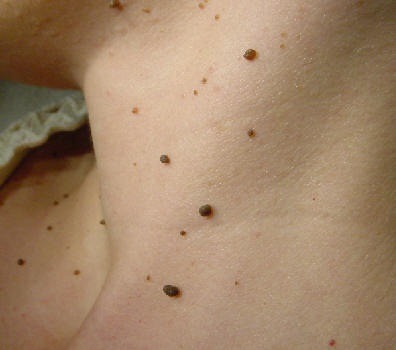Acrochordons
The acrochordons, also called fibroids pendulums, are small skin proliferations shaped wart. They are usually color the skin or brownish.
They don’t usually cause any symptoms, but occasionally become inflamed, causing itching and even pain. Properly said, are not “warts” as such, because they are not the product of any viral infection and are not contagious.
The fibroids appear, most of the time, as a result of the passage of time and friction, so we find them in areas of folds such as the neck, eyelids, armpits, groins and under the breasts. Frequently there are several simultaneously, especially in overweight people. Occasionally, they can be very numerous, giving an appearance of pavement in the area, especially in the back of the neck (pseudoacantosi nigricans). These cases are usually associated with an endocrinological disease, such as obesity or diabetes mellitus.
The acrocordons, properly, don’t require treatment, since they don’t imply any health problem. However, it is common for the patient to want to remove them because of the appearance that they have or because they cause him discomfort when they become inflamed. It isn’t strange that some can bleed if it’s traumatized with the neck of a garment of clothes or with a chain or necklace.
To eliminate them, it is not advisable to apply pharmaceutical products against warts (keratolytics such as sallicilic acid) or devices with the same purpose (sprays with liquid nitrogen), as those offered by shops can cause burns if not used professionally. They are usually insufficiently potent products for large acrochordons, or too potent for the small and can cause wounds or scars.
The dermatologists tend to eliminate them by applying cryotherapy of a tangentially and soft to avoid skin damages, or with CO2 laser, that, with regard to the first option offers the advantage of eliminating injuries immediately without having to wait a few days for to detach of skin. Usually, the procedure cause some discomfort, it is fast and very well tolerated by patients.

